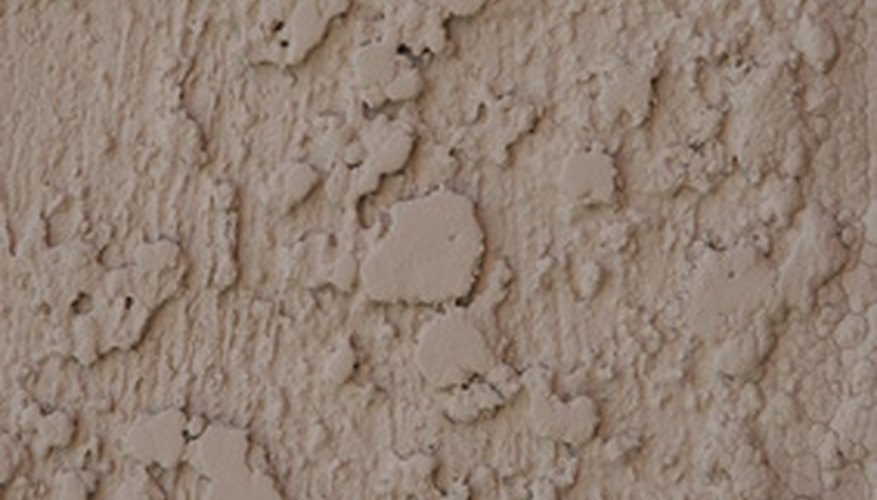Roughcast is a low-maintenance way to finish the outside of a house. After a few years, you may want to change the colour and, as a result, need to make small repairs. The most efficient way to refresh the colour involves painting the roughcast. With the right preparation, attention to details and the right outside paint, you can create a new look that will last for years.
Pressure wash roughcast
Pressure wash to remove dirt and dust using the minimum psi setting and the wide tip point. Start at the top, and work down. Scrape by hand, using a paint scraper, any loose paint left on the building after the washing. Allow the walls to dry for 24 hours.
- Pressure wash to remove dirt and dust using the minimum psi setting and the wide tip point.
Repair roughcast
Apply two coats of caulking to repair the small cracks. Allow it to dry completely before painting. Replace roughcast in the large cracks. Smooth the first application of filler compound into the hole, and allow it to dry. Use the second application to create the texture. Allow the compound in large cracks to dry at least one week, or until completely dry, before painting.
- Apply two coats of caulking to repair the small cracks.
- Smooth the first application of filler compound into the hole, and allow it to dry.
Type of paint and primer
For the best coverage, use the best exterior masonry primer you can afford. The best masonry paint should be water resistant and flexible while having the ability to breathe, prevent water from becoming trapped under the paint, bridge small cracks, thwart dirt and mildew, and resist chipping. Buy only masonry outside paint, and read the label carefully to determine whether the paint has the necessary components to paint on roughcast.
Painting
Tape and cover anything you may splatter with paint. Using a 10 cm (4 inch) brush marked "OK Stucco," paint 10 cm (4 inches) out from around windows, doors and the top edge. Use a lamb's wool or a cover made especially for painting over rough surfaces on the paint roller. Start at the top, and work down. Spray paint the large areas with 2 1/4 litre (1/2 gallon) per minute airless sprayer. Check the size of the tip with the paint recommendations on the paint can. On the first spray-on coat, one person should spray from side to side a thick coat of paint while another person back rolls the paint up and down with a roller to fill in all the crevices. Back roll is not necessary on the second coat. Wash off any overspray before it has time to dry.
- Tape and cover anything you may splatter with paint.
- Using a 10 cm (4 inch) brush marked "OK Stucco," paint 10 cm (4 inches) out from around windows, doors and the top edge.
